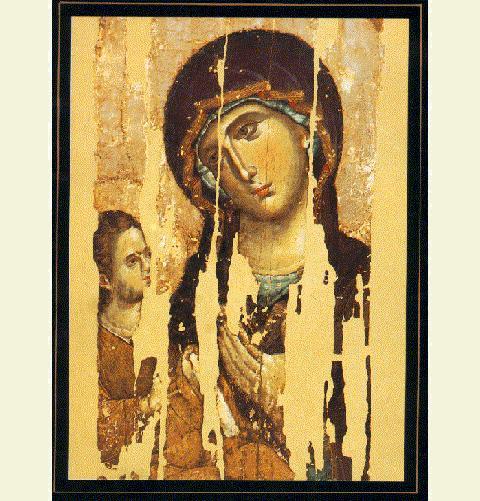Day Nine: The Word
John, the gospel writer, lived with Jesus Christ for three years. He followed Jesus around the dusty countryside as part of the band of disciples that had gathered around Christ. John saw Jesus teach and heal; he saw him when he was up, and when he was tired and discouraged. He was present when Jesus died on the cross. And John says of Jesus, “We have seen his glory, the glory of the One and Only, who came from the Father, full of grace and truth.” John recognized in Jesus something much more than simply another human being. John recognized Jesus’ divinity. Another disciple, Peter, in a letter to a group of believers in the first century wrote something similar. He claimed that they were not following cleverly devised stories, but had seen Jesus’ "God-nature" with their own eyes. They claimed that Christ, the son of God—John calls him “the Word”—was present when God created the world. In fact everything that was created was created by and through him. And then the creator of everything came and lived in his creation. He came so that we could know him, and through knowing him could know the father.
The age and condition of the icon above makes it hard for us to completely see the beauty that was there originally. But as we look at it, there begins to develop in our minds a conception of what it must have looked like. If we allow it to, it will set fire to our imagination because it points to a beauty that cannot now be completely seen. The Bible is that way, as well. It points to a beauty and truth that we cannot completely grasp here on this earth but only imagine. That beauty and truth is not visible to all. Time and intervening history make it difficult to see. But for those who have eyes to see it, there is beauty and wonder and breathtaking truth in its pages. The same is true of the Christmas story: as beautiful as the story is, it points to a wonder and magnificence beyond itself. The God of the universe loved his creation so much that he came to live as a creature and to die so that his creation could be redeemed from sin.
He became what we are
that he might make us what he is.
—Athanasius,
bishop of Alexandria during the 4th century *
O Son of God, perform a miracle for me: change my heart. You, whose crimson blood redeems mankind, whiten my heart.
It is you who makes the sun bright and the ice sparkle; you who makes the rivers flow and the salmon leap.
Your skilled hand makes the nut tree blossom, and the corn turn golden; your spirit composes the songs of the birds and the buzz of the bees.
Your creation is a million wondrous miracles, beautiful to behold. I ask of you just one more miracle: beautify my soul.
Amen

